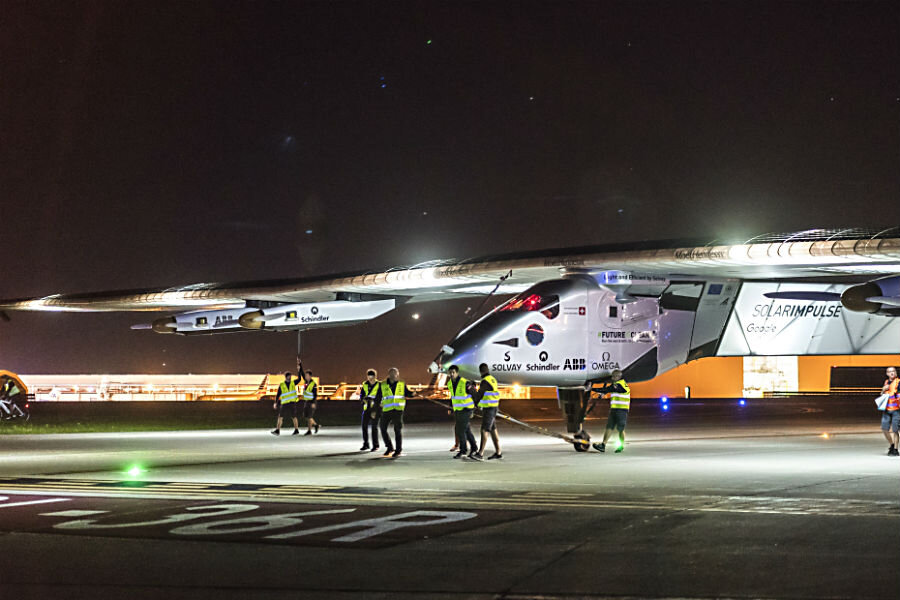Solar Impulse 2 lifts off for Ohio
Loading...
| Tulsa, Okla.
A solar-powered airplane that landed in Oklahoma last week is headed to Ohio on the latest leg of its around-the-world journey.
The Swiss-made Solar Impulse 2 took off from Tulsa International Airport before 5 a.m. Saturday with a destination of Dayton International Airport in Ohio. The flight was expected to take about 18 hours.
The aircraft took off from Phoenix Goodyear Airport in Arizona at about 3 a.m. on May 13 and landed in Tulsa about 20 hours later.
It departed from northern California in the early hours of May 2 and landed at the airport southwest of Phoenix 16 hours later. Last month, it flew from Hawaii to California.
The globe-circling voyage began in March 2015 from Abu Dhabi, the capital of the United Arab Emirates, and made stops in Oman, Myanmar, China and Japan.
The plane was expected to make at least one more stop in the United States before crossing the Atlantic Ocean to Europe or northern Africa, according to the website documenting the journey.
The Solar Impulse 2's wings, which stretch wider than those of a Boeing 747, are equipped with 17,000 solar cells that power propellers and charge batteries. The plane runs on stored energy at night.
Ideal flight speed is about 28 mph, although that can double during the day when the sun's rays are strongest.
The plane had a five-day trip from Japan to Hawaii and three-day trip from Hawaii to California's Silicon Valley.
The crew was forced to stay in Oahu, Hawaii, for nine months after the plane's battery system sustained heat damage on its trip from Japan.
Project officials say the layovers give the two Swiss pilots — Bertrand Piccard and Andre Borschberg — a chance to swap places and engage with local communities along the way so they can explain the project, which is estimated to cost more than $100 million.
The solar project began in 2002 to highlight the importance of renewable energy and the spirit of innovation.
As The Christian Science Monitor reported, the plane was supposed to land in Abu Dhabi, where it started its journey in March 2015, by the end of the summer last year. But overheated batteries caused damage that required extensive repair, so the trip was delayed until this month. Now, the Solar Impulse 2 has new batteries, a new cooling system, and an infusion of $20 million to continue its journey, as CNN reports.
The plane will make several more stops across North America, and then hopes to cross the Atlantic Ocean to Europe or northern Africa, with its final retreat to Abu Dhabi.
The hope for the epic journey, which has already generated excitement around the globe – Google co-founder Sergey Brin made a surprise appearance at the landing this morning – is that it will ignite the public’s passion for renewable technologies and more efficient use of energy.
“We want to demonstrate the importance of clean technologies for sustainable development; and to place dreams and emotions back at the heart of scientific adventure,” writes the company on its website. The co-pilots and founders wanted to show that the project is not sci-fi, “but eccentric enough to appeal to the people’s emotions and get their adrenaline pumping,” the Solar Impulse website says.







